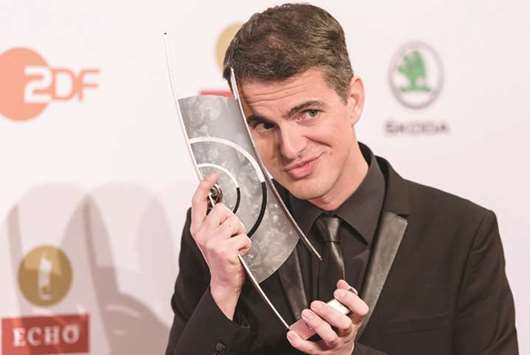the classical music world, with a recent opera in Germany showcasing this lesser-known
vocal range with an all-male version of Hungarian composer Peter Eotvos’ Three Sisters
There was a time when popular classical music was all about The Three Tenors. Now, classical record label Decca is pouring its marketing budget into an altogether different proposition: The 5 Countertenors.
The label appears to be responding to a general surge of interest in countertenors – men who can sing very high, with a vocal range that extends to notes usually reserved for female mezzo-sopranos.
A quick search for ‘countertenor’ on Amazon yields more than 450 results. And leading French countertenor Philippe Jaroussky has twice won the Echo Klassik prize for best male singer - one of the most prestigious awards in classical music.
German musicologist Corinna Herr believes it’s more than a passing fad. She says countertenors have firmly established themselves as the “fifth voice” – on top of the usual bass, tenor, alto and soprano – rightfully taking their place in the established vocal order.
It all started in the 1980s, she says, with the early music revival.
A lot of music from the Renaissance period of the 17th and early 18th centuries includes countertenor parts – which were traditionally sung by castrati. But countertenors should not be confused with castrati, says Herr, who is the author of a book called Singing aganist nature? Castrati and falsetto through music history.
In times gone by, men underwent operations to enable them to sing soprano and alto parts. These days, they simply sing them in falsetto – a vocal technique that helps men to reach the higher echelons of their voice without the need for mutilation.
“It’s completely different, and it sounds completely different,” Herr says.
As countertenors become more popular, they are also becoming more common. Andreas Scholl, Max Emanuel Cencic, Franco Fagioli, Jaroussky – these are star names in the music world, singing in a register that was, until recently, rarely heard.
And as the register has become more mainstream, the techniques used by singers have also started to evolve, Herr says: “In the 1980s and 1990s, countertenors generally just used to sing as high and as much like a woman as possible. But today, many countertenors have a more individual sound.”
Some have even attempted Romantic reportoire – such as Zvi Emanuel-Marial singing Schubert’s Winterreise.
Apart from early music, contemporary music is also a rich source of material for countertenors, with modern composers increasingly writing countertenor parts into their music – for example, Hungarian composer Peter Eotvos’ opera Three Sisters.
Following the death of their parents, the three titular sisters are living a miserable life in the Russian provinces with their brother and his wife, dreaming of escaping to the bright lights of Moscow.
The work, based on a play by Anton Chekhov, was originally written for four countertenors but since its premiere in 1998 in Lyon has rarely been performed that way – to Eotvos’ disappointment.
But this year, the Frankfurt Opera staged a new version of the opera with countertenors playing all the main parts. “For me, it was important that these four roles had an abstract quality, as they would in a Greek tragedy,” Eotvos said.
“This opera is about farewells. Someone is abandoned forever. I didn’t just want to tell the story of one family, but to strengthen the emotional impact – it’s about ALL farewells.”
In Greek tragedies, the universality of a message is sometimes communicated by the actors being raised from the ground. “I also wanted to ‘elevate’ my countertenors,” Eotvos says.
Bernd Loebe, executive director of Frankfurt Opera, says the main reason the roles have been played by women in the past is money. But for him, it was important to honour the wishes of the composer.
The sense of distance from the characters created by the use of countertenors is essential to the message of the opera, he says.
“It is also too easy to move away from the classic pathos that you get in a work when men play female roles.”
The role of Amme is sung by a bass - the lowest voice type. Generally speaking, the work is unusually scored, requiring two orchestras – and therefore two conductors.
One of them, Dennis Russell Davies, says the use of countertenors has practical advantages too: “It’s interesting, because it makes it easier to understand the text and find the right balance with the instruments.”
In Frankfurt, sisters Irina, Mascha and Olga were played by countertenors Ray Chenez, David DQ Lee and Dmitry Egorov. The fourth in the line-up, their sister-in-law Natascha, was played by Eric Jurenas. – DPA

SINGER: Countertenor Max Emanuel Cencic sings the lead role in the opera Arminio in a German theatre.

